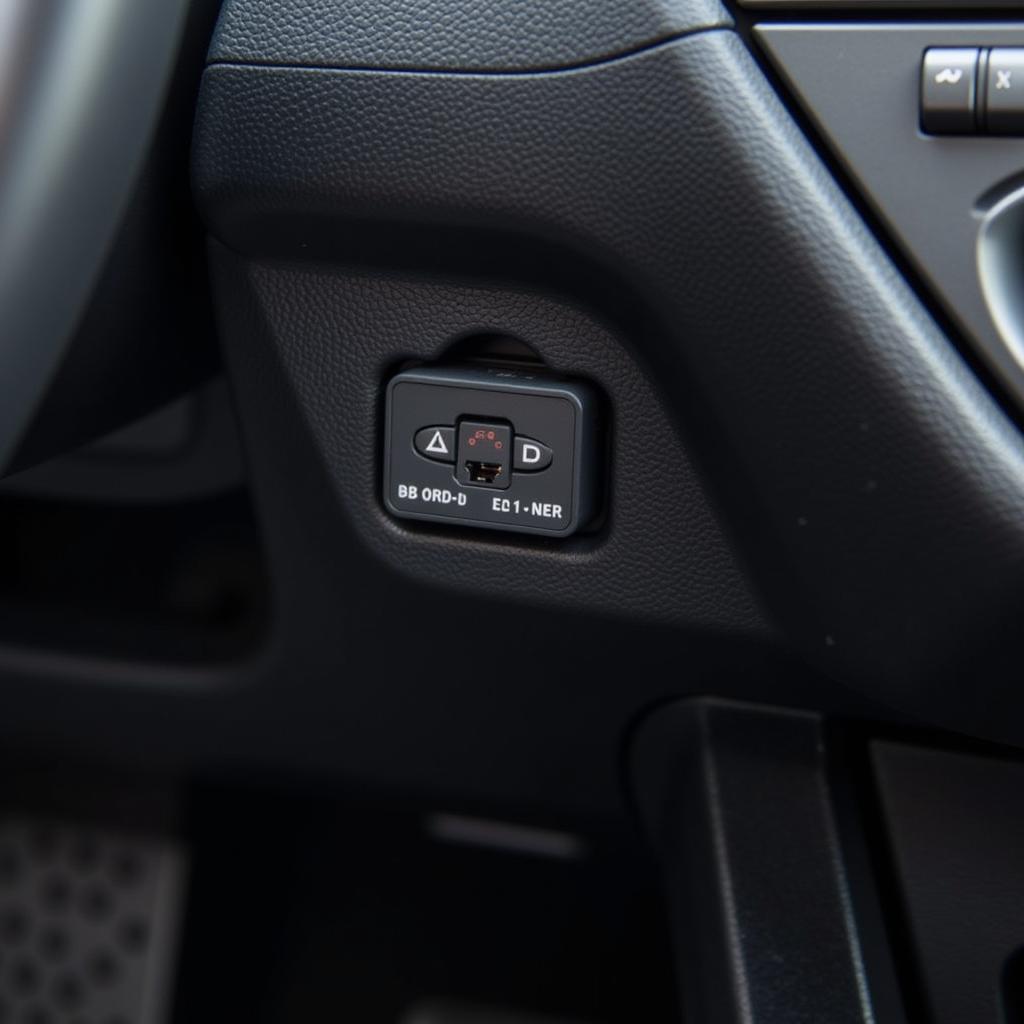Car Repair Diagnostic Codes are standardized alphanumeric codes that represent specific malfunctions detected in a vehicle’s computer system. These codes are an essential part of modern car repair and diagnostics, providing technicians with valuable insights into the root cause of a vehicle’s problems.
 Car Diagnostic Tool Reading Codes
Car Diagnostic Tool Reading Codes
What are Car Diagnostic Codes?
Think of car diagnostic codes like a secret language your car uses to communicate with mechanics. When something goes wrong, your car’s onboard computer system, also known as the Engine Control Unit (ECU), generates these codes. They act as virtual breadcrumbs, leading technicians to the source of the issue. These codes are standardized across most modern vehicles, thanks to the implementation of the On-Board Diagnostics II (OBD-II) standard in 1996.
 OBD-II Port Location in a Car
OBD-II Port Location in a Car
Deciphering the Code Structure
Car repair diagnostic codes follow a specific format, making it easier for technicians to understand the nature of the problem. A typical OBD-II code consists of five characters:
-
First Character: This letter indicates the system where the fault lies. For example:
- P: Powertrain (engine, transmission, emissions)
- B: Body (airbags, power windows, central locking)
- C: Chassis (ABS, traction control, suspension)
- U: Network and Communication (modules, wiring, sensors)
-
Second Character: This number provides further information about the code:
- 0: Standardized OBD-II code
- 1: Manufacturer-specific code
-
Third Character: This digit identifies the specific subsystem related to the fault. For instance:
- 1: Fuel and Air Metering
- 2: Fuel and Air Metering (Injector Circuit)
- 3: Ignition System or Misfire
- 4: Auxiliary Emissions Controls
- 5: Vehicle Speed Control and Idle Control System
- 6: Computer Output Circuit
- 7: Transmission Control
- 8: Transmission Control
-
Fourth and Fifth Characters: These two digits pinpoint the exact component or circuit experiencing the problem.
Common Car Diagnostic Codes and Their Meanings
While there are thousands of potential car repair diagnostic codes, some appear more frequently than others. Here are a few examples:
-
P0171: System Too Lean (Bank 1) – This code indicates that the engine is running on a lean air-fuel mixture, meaning there is too much air compared to fuel.
-
P0300: Random/Multiple Cylinder Misfire Detected – This code suggests a misfire occurring in one or more engine cylinders, which can result in rough idling, reduced power, and increased emissions.
-
P0420: Catalyst System Efficiency Below Threshold (Bank 1) – This code points to a problem with the catalytic converter’s ability to convert harmful exhaust gases into less harmful substances.
-
P0500: Vehicle Speed Sensor Malfunction – This code indicates a problem with the vehicle speed sensor, which can lead to inaccurate speedometer readings, cruise control issues, and transmission shifting problems.
It’s important to note that these are just a few examples, and the meaning of specific codes can vary slightly depending on the car make and model.
The Importance of Professional Diagnostics
While it’s tempting to self-diagnose your car using a basic OBD-II code reader, it’s crucial to understand that codes only provide a starting point. Here’s why professional diagnostics are essential:
- Accurate Interpretation: Experienced technicians possess the knowledge and expertise to correctly interpret car repair diagnostic codes and identify the underlying issue.
- Comprehensive Testing: Professionals utilize advanced car diagnostics tools and techniques to perform comprehensive tests and pinpoint the root cause of the problem.
- Effective Repairs: By accurately diagnosing the issue, technicians can recommend and carry out the most effective repairs, saving you time and money in the long run.
FAQs about Car Repair Diagnostic Codes
Q: Can I drive my car with the check engine light on?
A: While driving short distances with the check engine light on might be possible, it’s not recommended. Ignoring the light could lead to further damage and more costly repairs down the line.
Q: Do all car diagnostic codes require immediate attention?
A: Not all codes demand immediate action. Some codes, like those related to loose gas caps, might be minor. However, it’s always best to consult a mechanic to determine the severity of the issue.
Q: Can I reset the check engine light myself?
A: Yes, you can temporarily reset the check engine light using a code reader. However, the light will reappear if the underlying problem persists.
Conclusion
Understanding car repair diagnostic codes empowers car owners to be more informed when dealing with vehicle issues. While accessing and interpreting these codes can be done with basic tools, seeking professional diagnostics is crucial for accurate diagnosis and effective repairs. By utilizing the information provided by these codes, car owners and mechanics can work together to keep vehicles running smoothly and safely.
For further information and resources on car diagnostic tools, you can explore options like diagnostic tool euro car parts and laptop based car diagnostics uk available in the UK. Additionally, for those interested in brand-specific software, you can find resources like volvo car diagnostic software that cater to specific needs. Remember, having the right tools and information at your fingertips is essential for efficient and accurate car diagnostics.

Leave a Reply